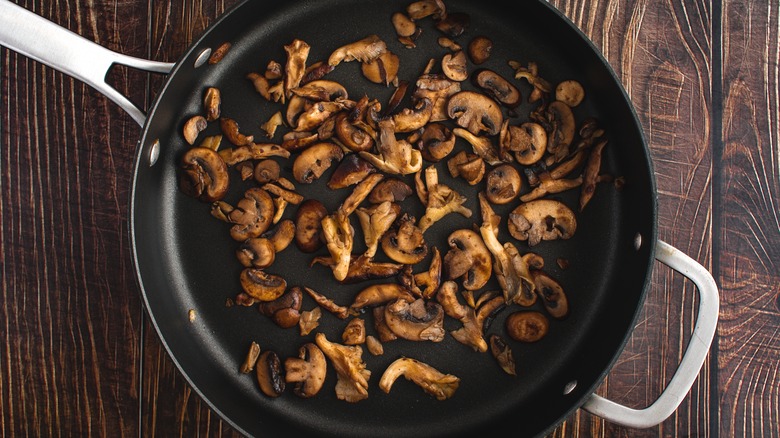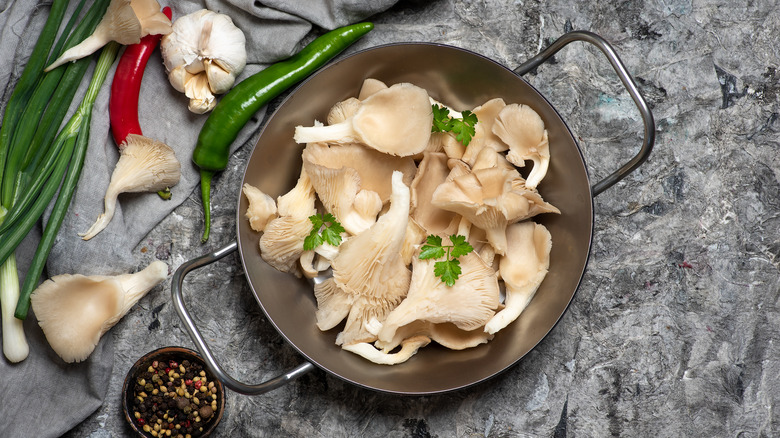The Most Important Tip To Follow For Perfect Sauteed Mushrooms
Sauteed mushrooms are a delicious fungus that ticks a lot of boxes. They're incredibly versatile, with a flavor profile and texture that makes them perfect for soups, sides, and stir-fries. They're just as good with meat as they are in its place — as vegans and vegetarians well know. And yet, a lot of people turn their noses up at mushrooms altogether. Unfortunately, many people are under the impression that mushrooms are mushy and bland. But could that be due to how the fungi have been cooked?
Improperly sauteed mushrooms can certainly come out of the pan dripping, soggy, and even greasy. Which is why it's important to give them room to breathe. That's what this tip is all about. The last thing you want to do when sauteing or pan-frying mushrooms is to crowd the pan with too many all at once. Doing so will result in the lackluster, slimy, mushrooms that many people complain about.
Give those mushrooms plenty of room
No matter what type of mushroom you're cooking — whether it be oysters, portobellos, buttons, or shiitakes — it's important not to stack or pile them in the saute pan. Even better, leave space in between; a packed layer of mushrooms isn't going to cook up right either. If it helps, think of sauteing mushrooms as similar to cooking meat. If you crowd the pan with too much, mushrooms don't brown properly and end up steaming in their juices.
Likewise, mushrooms also release liquid as they cook. Mushrooms consist of up to 90% water, meaning that they have a super high moisture content. All of that liquid needs somewhere to go. It can either evaporate into the air, or it can be soaked back up. This means that if that liquid can't escape because the pan is crowded, your mushrooms may turn out mushy and wet. This is why it's super important to give those mushrooms plenty of space — even if it means you have to cook them in multiple batches.
Avoid oily mushrooms with this tip
Another tip to keep in mind is to make sure that your pan is up to temperature before adding the mushrooms. Since mushrooms can act like little sponges, failure to heat the pan enough can cause your mushrooms to suck up the oil — which is how you'll end up with greasy, unappetizing mushrooms, even when you've been careful not to crowd the pan. This is especially important for oyster mushrooms, which are particularly porous and fragile. Additionally, a pan that is not warm enough will also interfere with the browning process, and, in turn, cause the mushrooms to be soggy and slimy.
Crowding the pan can also cause the temperature in the pan to drop, essentially creating a double-whammy situation where the mushrooms are both soggy and oily. No wonder so many people think they don't like the fungi! Yet another good reason to always follow this tip and never overcrowd the pan.


